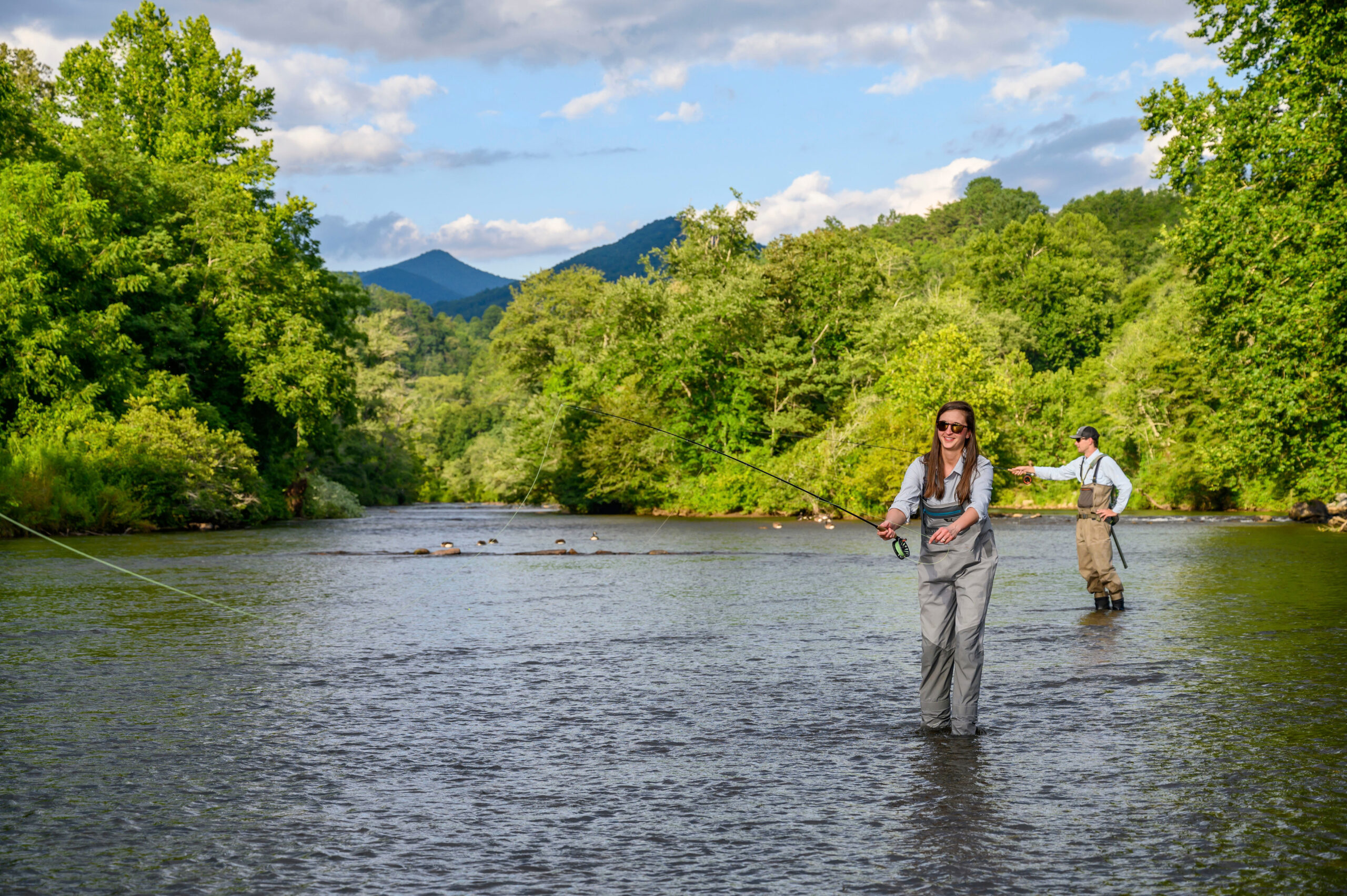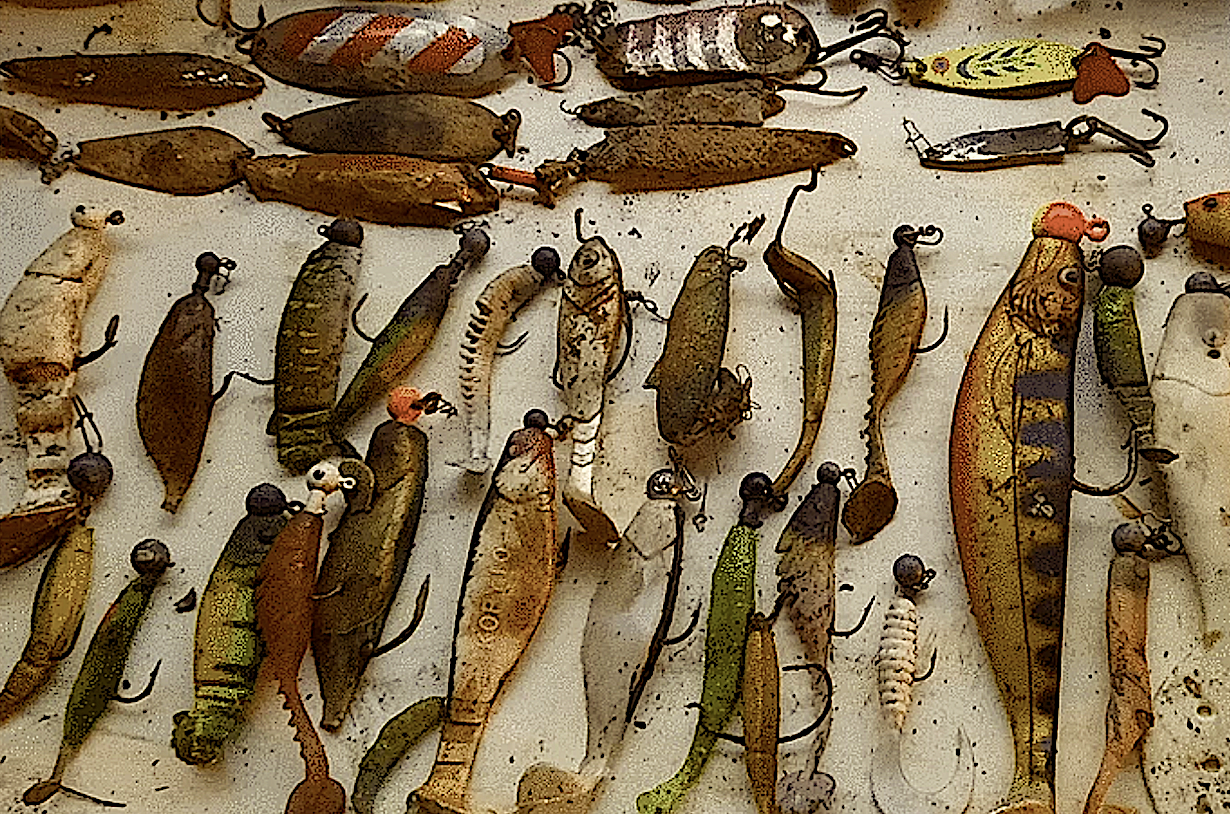Do Trout Stocked in Western NC Rivers Stay Put?

Most trout stay within about a mile of their original stocking location but are available in high numbers to anglers for only a few weeks.
There’s always a first for everything.
Ever since we launched Hook, Line & Science in December 2018, we have focused exclusively on research and data related to North Carolina saltwater angling. But we understand that freshwater fishing is an important pastime and that more than a few anglers fish in both freshwater and saltwater. Therefore, we decided to highlight a study for freshwater anglers.
Research Need
Trout fishing is extremely popular in western North Carolina, and the activity produces both economic and social benefits for residents and visitors. In general, the freshwater rivers and streams in western North Carolina cannot support too much angling without the addition of hatchery-stocked fish. The North Carolina Wildlife Resources Commission has an active fish stocking program in the region with the primary goal of supporting and enhancing angling opportunities.
But maintaining hatchery operations and fish stocking programs is expensive and can be inefficient if we don’t understand fish behavior. Anglers and managers both want to know different versions of the same question: When and where can mountain trout anglers go to find the most fish?
What did they study?
Scientists used a combination of electronic and radio tracking tags to follow individual brook trout, brown trout, and rainbow trout from stocking through the entire catch-and-release fishing season (October to April). The researchers limited their study to three river reaches that operate under “Delayed-Harvest-Trout-Waters,” in which some harvest is allowed in the summer months (but with the remainder of the year catch-and-release only).
What did they find?
Between 19% and 65% of trout left the delayed harvest study reaches, while 1% to 29% died within the reaches. In other words, more trout swam away from the stocking area than died there.
Over the course of the fishing season, the majority of fish (71%) remained within 1.2 miles of the stocking location.
Anything else?
Researchers tagged two general classes of hatchery-raised fish for this study — those considered “catchable” (about 10 inches long) and those considered “large” (about 15 inches long).
Large stocked trout in this study tended to move out of the study area more frequently and experience higher rates of natural mortality than catchable-sized fish. There is research to suggest that older, hatchery-reared fish, accustomed to living longer in an aquaculture setting, must learn wild-fish behaviors after stocking. It would be difficult to outright eliminate the stocking of large fish, though, because this size class provides a unique experience for fishers.
What should anglers know?
The data suggests that anglers are likely to encounter more fish in “Delayed-Harvest-Trout-Waters” if fishing takes place a short distance from the stocking location and within a few weeks of the stocking event.
Reading
Flowers, H.J., T.J. Kwak, J.R. Fischer, W.G. Cope, J.M. Rash, and D.A Besler. 2019. Behavior and survival of stocked trout in southern Appalachian Mountain streams. Transactions of the American Fisheries Society 148: 3-20. DOI: 10.1002/tafs.10113.
Federal Sport Fish Restoration Funds, North Carolina State University, NCWRC, USGS, U.S. Fish and Wildlife Service and Wildlife Management Institute provided funding for this study.
Summary compiled by Scott Baker
Lead photo: Fly Fishing in western N.C., courtesy of Meredith Travel Marketing/VisitNC.com
The text from Hook, Line & Science is available to reprint and republish, but only in its entirety and with this attribution: Hook, Line & Science, courtesy of Scott Baker and Sara Mirabilio, North Carolina Sea Grant. HookLineScience.com



